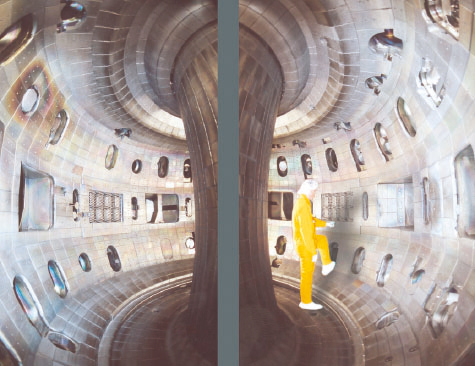Few control systems are as complex as the system required to optimize a nuclear fusion reactor.
And few human endeavors have been as ambitious as the international collaboration to build ITER, a giant fusion reactor, in France.
Eugenio Schuster, assistant professor of mechanical engineering and mechanics, is embracing the first challenge directly and the second indirectly.
Schuster recently received an NSF CAREER Award to study the nonlinear control of plasma, or ionized hydrogen gas, in nuclear fusion. He has helped edit two special editions of IEEE Control Systems Magazine on fusion, and has organized an NSF workshop on the modeling and control of fusion.
Nuclear fusion offers the promise of unlimited supplies of clean energy, but only if scientists and engineers can control the volatile conditions inside the fusion reactor, or tokamak, where temperatures reach 100 million degrees Celsius as isotopes of hydrogen fuse to create atoms of helium.
The long-term goal of ITER, which is a collaboration of the U.S., the European Union and five other nations, is to generate more energy than is required to heat the hydrogen plasma.
The key to achieving a high ratio of fusion energy to input energy, says Schuster, is active control systems that maintain a self-sustaining fusion reaction for long periods of time. These systems, he says, need to regulate the density, current and temperature of the plasma, to keep the plasma stable, and to confine it inside the magnetic fusion reactor. The shape of the fusion reactor and the material of which it is made are other variables with which control engineers must contend.
Schuster is working on several critical challenges in the control of fusion reactors, including stabilization of neoclassical tearing modes, current profile control, and stabilization of resistive wall modes.
He and his Lehigh students and colleagues have close ties with all three major U.S. fusion research centers – General Atomics in San Diego, the Princeton Plasma Physics Laboratory and MIT’s Plasma Science and Fusion Center. Schuster also maintains contact with ITER scientists.
ITER is projected to cost $10 billion, take 10 years to build and require several decades of tests. Experts say it could be at least 30 years before humans enjoy the fruits of fusion.
Schuster is optimistic.
“For a fusion researcher, these are really exciting times. ITER is the biggest scientific endeavor in human history, a product of 50 years of work with 30 years more to come.
“I’m very confident we will succeed. This will be something I can tell my grandchildren about.”

